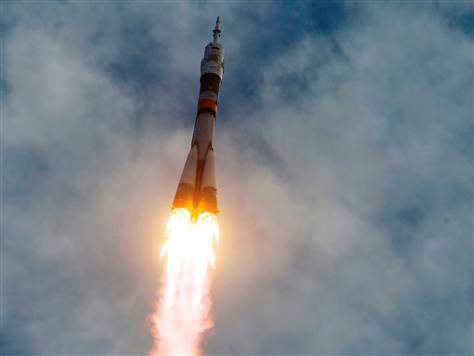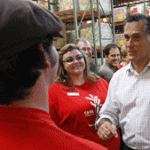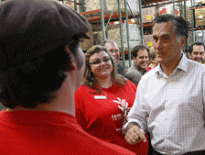A Russian Soyuz rocket launched into orbit late Saturday, carrying three new crewmembers toward the International Space Station. The rocket rose from the Baikonur Cosmodrome in Kazakhstan, lofting the Soyuz TMA-05M spacecraft into orbit. Liftoff came at 10:40 p.m. ET Saturday, which means it was early Sunday at the Central Asian spaceport. Onboard were an American, a Russian and a Japanese astronaut due to take up residence for four months at the orbiting outpost.

NASA TV showed the Soyuz soaring smoothly into a blue sky dotted with clouds, punching a hole through a cloud layer on its way up. It is due to dock at the station early Tuesday, at which time the three newcomers will join the existing crew of three on the space station’s Expedition 32 mission.
The new complement includes NASA astronaut Sunita Williams, Russian cosmonaut Yuri Malenchenko, and Japanese spaceflier Akihiko Hoshide.
“Unfortunately our mission is only four months — I wish it would be years and years and years,” Williams said during a preflight briefing. “I’m really lucky to be flying with Yuri and Aki. I think we’re going to have a great time.”
An international milestone
By coincidence, the U.S.-Russian-Japanese crew’s launch and docking is coinciding with the 37th anniversary of the world’s first international space mission: the Apollo-Soyuz Test Project.
On July 15, 1975, NASA launched an Apollo capsule and the Soviet Union launched its Soyuz 19 capsule to perform the first international space docking test. The mission set the foundation for the international partnerships that have led to the $100 billion International Space Station in orbit today.
In September, the current station crew — Gennady Padalka and Sergei Revin of Russia, and NASA astronaut Joe Acaba — will return to Earth, and Williams will relieve Padalka as space station commander. She will be the second female space station commander in the facility’s history. (NASA astronaut Peggy Whitson was the first, in 2007.)
“I’m not good at bossing people around — but my husband might say that’s not so true,” Williams joked. “If I say we’re going to do this, they all jump on it. Everybody’s also felt free to offer their two cents. I think it’s going to be really, honestly, pretty easy, and part of that is communication.”
The international crew will each be bringing a taste of home and their own cultures with them to share.
“I’m not a very good cook, but fortunately we have a couple of Japanese foods that I’m bringing up, so I’d like to share that with my fellow crewmates during my stay,” Hoshide told Space.com. “Just sharing stories, talking to each other provides a great base of international cooperation.”
Busy flight ahead
The Expedition 32 mission will be chock full of activities, highlighted by space station maintenance, visits by robotic cargo spacecraft, spacewalks (also known as extravehicular activities, or EVAs), and a full load of science experiments.
“That’s a whole lot of work the crew has to do to do the berthings, the dockings and the EVAs,” said Mike Suffredini, International Space Station Program manager. “In addition we will allocate 35 hours per week to research.”
Several visiting unmanned spacecraft are expected to deliver supplies to the space station during Expedition 32. One of those space freighters, a Japanese HTV-2 cargo ship, is slated to launch in just six days, NASA officials said.
There is at least one Russian spacewalk planned during the crew’s stay, and possibly an American-led one as well.
“To do an EVA, this is always something special; I can compare it to docking a vehicle to station, and going outside, it’s something unusual,” Malenchenko said. “So we are looking forward to do this.”
Commercial delivery
Williams, Malenchenko, and Hoshide may also be in space to see the first routine cargo delivery by a private spacecraft, if SpaceX launches its first Dragon supply-delivery run while they’re there.
Dragon flew a test mission to the space station in May, and is now prepping to launch the first of 12 delivery flights the company is contracted for over the coming years.
“Getting the commercial sector involved, I think it’s a good thing,” Hoshide said. “It opens up new doors. I’m looking forward to that very much.”





